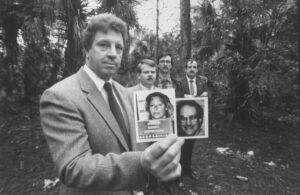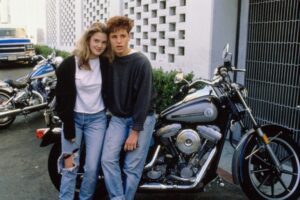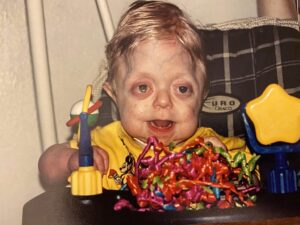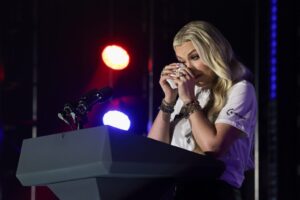Aileen Wuornos: From a Traumatic Childhood to America’s “Damsel of Death”
Keywords: Aileen Wuornos, female serial killer, Florida murders, Daytona Beach, Broward Correctional Institution, death row, lethal injection, childhood trauma, abuse, self-defense claims
At first glance, she seemed like any other little girl—bright eyes, blonde hair, a timid smile. Yet beneath that gentle exterior was a childhood scarred by neglect, violence, and secrets heavy enough to warp any life’s trajectory.
Her Mother Disappeared
Born in 1956 in a small Michigan town, her life opened in chaos. At just four, her 20-year-old mother packed up and vanished, leaving her and her brother behind. The mother would later admit it was likely a grave error, calling it “the biggest mistake” she had ever made.
Almost simultaneously, her 23-year-old father—already imprisoned for the kidnapping and assault of a young girl—died by suicide behind bars. The children moved in with their grandparents, but safety never arrived.
The grandmother battled alcoholism, and the grandfather was reportedly violent and predatory. Years later, the girl’s mother reflected on the family dynamic:
”I should have . . . adopted them to strangers. We, in our family, suffered a form of child abuse. My father was verbally abusive. My mother was verbally abusive, and we were always told we were no good,”
Became Wards of the State
By 13, she was pregnant after an assault. Rumors swirled—some pointed to her brother, others to a friend of her grandfather. Family members told The Tampa Bay Times that no one believed her, and no police report was filed. She placed the baby for adoption, hoping he would have a chance she never did.

Tragedy followed in quick succession. Her grandmother died, described by the girl as “really clean and decent,” and soon after, her grandfather took his own life. She and her brother, Keith, became wards of the state. By 11, she had begun exchanging sexual acts at school for cigarettes, drugs, and food. Eventually, she dropped out, drifted onto the streets, and survived through petty crime and prostitution. Arrests for theft, assault, and disorderly conduct piled up through her teens and early twenties.
Florida Would Learn Her Name
By her mid-20s, she had made her way to Florida. In 1989, a man’s body was discovered in wooded terrain near Daytona Beach—shot several times. Within weeks, investigators tied the killing to a hitchhiking woman recently seen in the area. When police caught up with her, she confessed—not to one homicide, but to several. Across central Florida, men were turning up dead.
She claimed self-defense, saying each victim had tried to assault her and she had fought for her life. As she told the Orlando Sentinel in March 1991:
“I’m not a man-hater,”
“I’ve been through so many traumatic experiences that either I’m walking in shock or I’m so used to being treated like dirt that I guess it’s become a way of life.”
“Damsel of Death”
Prosecutors painted a different picture: a calculated killer who lured men, shot them, and took their belongings. By trial, she stood accused of murdering seven men in the span of a year. Headlines dubbed her America’s first female serial killer; the name Aileen Wuornos would be echoed in books, documentaries, and Hollywood retellings—earning the moniker “Damsel of Death.”

As one chief investigator stated in 1991:
“Wuornos is a killer who robs, not a robber who kills. She indeed appears to be very much a serial killer,”
A Media Circus and a Death Sentence
Her trial became a media spectacle. She insisted the killings were acts of self-defense, but the jury rejected that claim. In January 1992, Wuornos was convicted and ultimately received six death sentences. In court, she declared:
“I am as guilty as can be. I want the world to know I killed these men, as cold as ice. I’ve hated humans for a long time. I am a serial killer. I killed them in cold blood, real nasty.”
On death row at Broward Correctional Institution, she railed against delays:
“There is no point in sparing me,”
“It’s a waste of taxpayers’ money. I killed those men, robbed them. And I’d do it again, too.
There’s no chance in keeping me alive or anything, because I’d kill again. I have hate crawling through my system.”
Last Words
On October 9, 2002, Aileen Wuornos, 46, was executed by lethal injection. Her final statement was as unsettling as the legacy she left behind:
“I would just like to say I’m sailing with the rock, and I’ll be back, like Independence Day, with Jesus. June 6, like the movie. Big mother ship and all, I’ll be back, I’ll be back.”
Her crimes horrified the public; her past remains a chilling prism through which many still ask: Was Aileen born a monster—or made into one?





